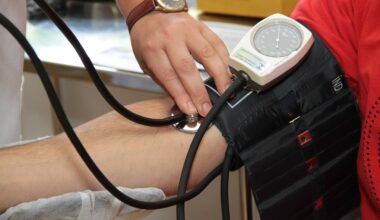Pre-Workout Cardio: To Do or Not To Do Before Lifting
The debate surrounding pre-workout cardio has been prevalent among fitness enthusiasts for years. Some swear by it, while others argue against it. The primary question is whether engaging in cardio exercises before lifting weights enhances or hinders performance. Enthusiasts of pre-workout cardio believe that it can warm up the muscles, increase heart rate, and prime the body for an intense lifting session. Common cardio exercises such as jogging, cycling, or jumping jacks elevate body temperature and get the blood flowing, which can enhance flexibility. Furthermore, pre-workout cardio can improve mental focus and readiness, which is essential in maximizing workout efficiency. However, others contend that performing cardio prior to weightlifting can deplete energy reserves, making it tough to lift heavier weights. They argue that the intensity of strength training is inhibited when cardio is performed beforehand. Ultimately, the decision is personal and dependent on individual fitness goals. It is crucial to develop a balanced routine that incorporates both strength and cardio training efficiently.
Regardless of where you stand on this debate, understanding your own body is key. Each person reacts differently to exercise, making it important to tailor your routine accordingly. Some athletes find that a short cardio warm-up boosts their overall performance in the gym, while others feel excessively fatigued and struggle to complete their weightlifting goals. A moderate approach may be the most beneficial, incorporating light cardio for about 5 to 10 minutes before lifting. This duration allows you to warm up the muscles effectively without draining energy reserves. You can also experiment with varying intensities of cardio to determine what works best for you before strength training. Another factor to consider is the type of lifting session planned. If your workout is focused on maximal strength training, it may be wise to avoid extensive cardio beforehand. On the other hand, if your lifting session is geared more towards hypertrophy or endurance, minimal cardio may serve to enhance your performance. Finding your sweet spot is essential to achieving optimal workouts.
Types of Pre-Workout Cardio
When considering the types of cardio to incorporate into your pre-workout routine, there are several options to choose from. The key is to select an activity that adequately warms up the muscles yet doesn’t exhaust your energy before lifting. Some popular options are steady-state cardio, high-intensity interval training (HIIT), or dynamic stretching. Steady-state cardio involves a moderate-intensity workout that lasts for an extended period. This could include brisk walking, cycling, or light jogging. It’s an effective way to gradually increase heart rates without excessive fatigue. In contrast, HIIT consists of short bursts of intense activity paired with rest or lower-intensity periods. This method can heighten your metabolic rate and improve cardiovascular fitness, but it may also drain your stamina quickly. Dynamic stretching, like leg swings or arm circles, allows your muscles to mobilize while preparing for weightlifting. This method is gaining popularity as it involves movement and provides flexibility to the muscles, making it a valuable tool pre-strength workout.
Incorporating light cardio into your routine doesn’t have to be complicated. For a straightforward but effective warm-up, consider a few minutes of dynamic stretching that specifically targets the muscles you’ll use during your lifting session. For example, if you plan to do an upper-body workout, perform arm circles and shoulder stretches to adequately prepare those muscles. Alternatively, if a full-body routine is on the agenda, consider dynamic lunges or leg swings to engage multiple muscle groups. The goal here is to awaken the body rather than exhaust it. As always, listen to your body and adjust based on how you feel. If you notice that a particular warm-up helps you perform better, stick with it consistently. Ultimately, your objective is to create a stimulating environment for your muscles that leads to improved performance during lifting sessions. The practice of warming up is essential in preventing injuries and promoting better movement patterns, thus enhancing overall training effectiveness.
Assessing Your Goals
Your personal fitness objectives will play a significant role in determining whether to include pre-workout cardio in your routine. If your primary focus is to increase strength and muscle mass, it may be wise to limit the amount of high-intensity cardio before lifting. Engaging in extensive cardio could lead to fatigue and diminish your lifting capacity. Conversely, if you are aiming for weight loss or overall stamina, some form of light cardio before strength workouts can be beneficial. It can boost your heart rate and help you tap into fat reserves for fuel during your lift. Therefore, assessing your goals is crucial. If weightlifting is your primary aim, prioritize strength training and make adjustments to the cardio component accordingly. Alternatively, if endurance or weight management is your focus, a more balanced approach incorporating cardio can aid in achieving those goals. Your to-do list should reflect a well-rounded plan that aligns with your personal outcomes, ensuring progress towards your specific ambitions.
Ultimately, finding the right balance in your workout routine that includes pre-workout cardio is a personal journey. The amount of cardio you’ll need can change over time as you shift your fitness goals, body adapts, or as new research reveals more efficient training practices. Regular assessments of your energy levels before and after workouts can provide insight into how cardio affects your lifting performance. For example, if you consistently find that your lifts suffer after cardio, it may be worth eliminating it or scaling back. Alternatively, do you feel great and power through your lifting after a short warm-up cardio session? Documenting your experience in a training journal can be a valuable tool in tracking these variables. Additionally, listening to your body is crucial. If you feel unusually tired or sore, consider adjusting either the intensity or duration of your cardio warm-up. Ultimately, everyone responds differently, and it’s your body, so commit to discovering what works best for you in your journey.
Conclusion
In conclusion, whether you choose to do pre-workout cardio before lifting comes down to personal preference and fitness goals. While many cite physical and mental benefits, others may find that it detracts from their strength training performance. Both paths offer unique advantages and disadvantages, so it’s essential to identify what resonates with your body and whims. Consider experimenting by incorporating light cardio before different lifting sessions and assess your energy levels and performance. Over time, you will identify patterns that enhance your gym experience and effectiveness, supporting your journey towards stronger lifts. If you determine that incorporating a warm-up cardio routine works well for you, embrace it wholeheartedly. On the contrary, if your results shine brighter without, be steadfast in your decision as you propel your fitness forward. Bear in mind that training adaptations take time; understand that consistency and adapting your routines are crucial to achieving your desired fitness outcomes. Regardless of your chosen approach, maintain an open mind and adapt as your fitness journey unfolds.
Pre-workout cardio is a debated topic, crucial to enhancing or hindering your performance. Understanding your goals and body is essential, as each individual reacts differently to such exercise routines. Tailor your routine to what feels right, whether it’s light cardio for warming up or none at all.


